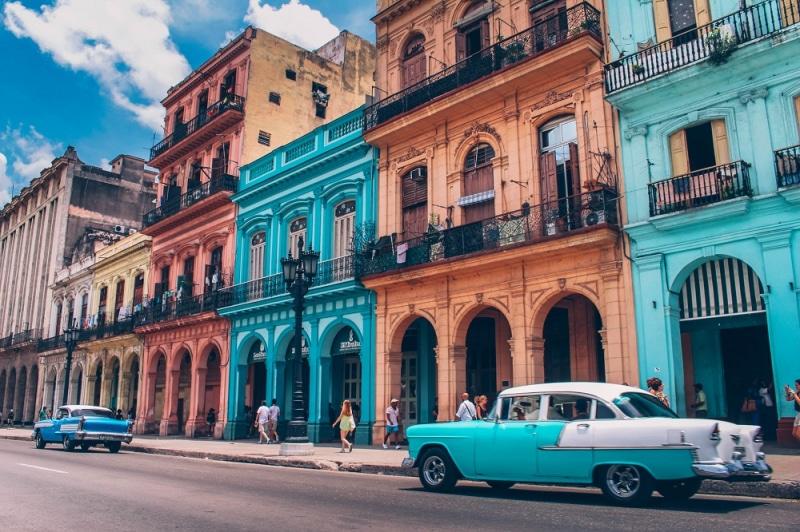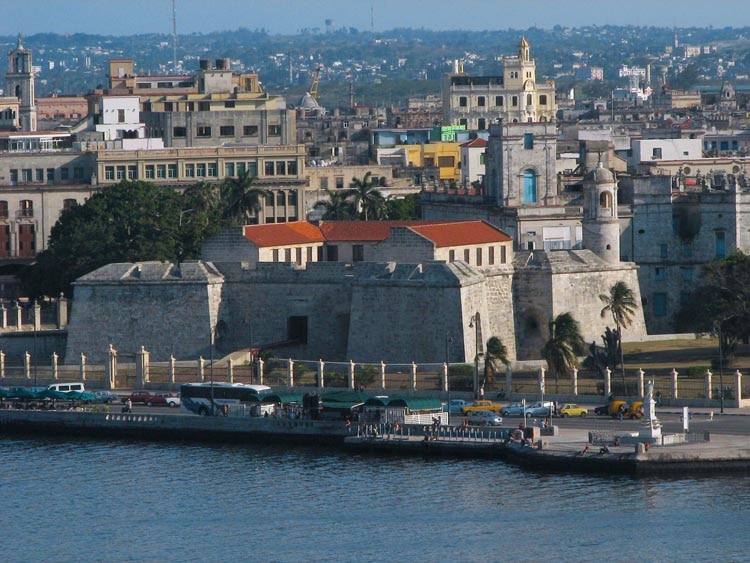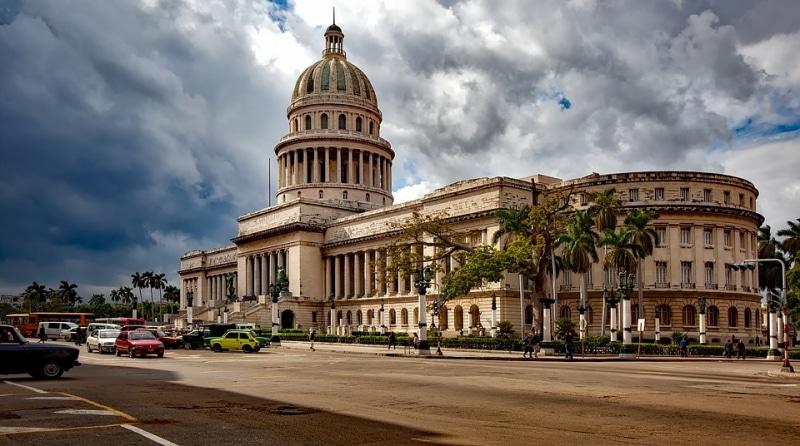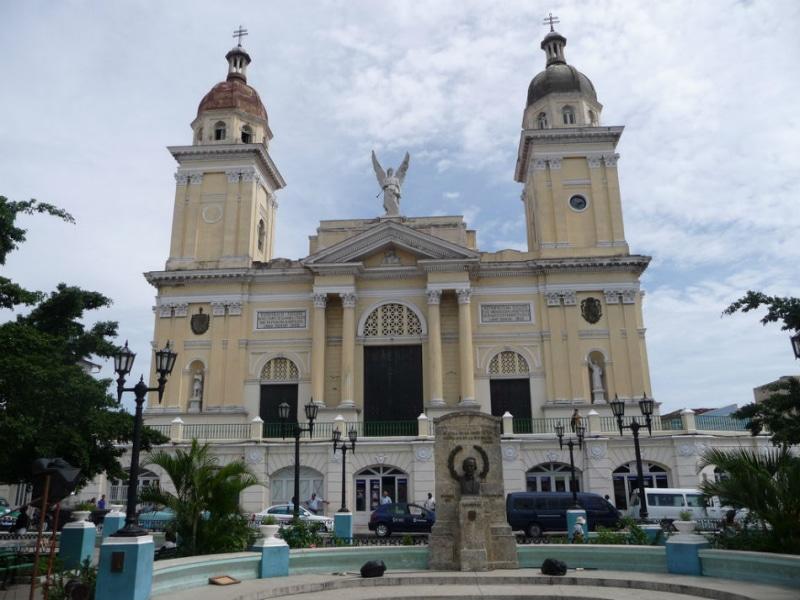Architecture, Cuba

Removed from Unnamed collection
Old Havana 
Old Havana, located around the five main squares, and has one of the most impressive ensembles of historical architecture. From Baroque to Art Deco, from Neoclassicism to Art Nouveau, the rainbow-colored facades of the area adorn the diverse cultural heritage of Cuba.
Founded in the early 16th century on the southwest coast of Cuba by Spanish conquistador Pánfilo de Narváez, Havana moved twice before taking permanent establishment on the Caribbean island’s northwest coast.
Strategically chosen for its location in the Gulf of Mexico, Havana became a mandatory stop for ships traveling to and from the New World, and quickly became the largest port in the Spanish West Indies. Today, the city still claims some of the oldest stone fortifications in the Americas, and Old Havana, or Habana Vieja, claims some of the most beautiful architecture. https://www.nationalgeographic.com/travel/destinations/north-america/cuba/havana/old-havana-world-heritage-site/
Map

Removed from Unnamed collection
Castillo de la Real Fuerza 
Castillo de la Real Fuerza Castle in Old Havana, Cuba, one of Cuba’s most ancient castles. It is a great sample of military architecture during the Spain's rule over the Caribbean. It is located in the Plaza de Armas Square in Old Havana facing the sea. The Castle, as well as the rest of the old city’s fortifications, has been declared World Heritage Site by UNESCO.
The Castillo de la Real Fuerza Castle is the oldest fortress still preserved in all the Americas. It was built between 1558 and 1577, in the same location where a fort was destroyed by French pirates in 1555. The west tower is crowned by the copy of a well-known bronze weathervane called La Giraldilla. The original was made in Havana in 1630 and is quite similar to the Giralda of Seville. https://www.tripcuba.org/castillo-de-la-real-fuerza
Map

Removed from Unnamed collection
El Capitolio 
El Capitolio, or the National Capitol Building is one of the most visited sites in Havana. This majestic construction, located in the Centro Habana, is similar to that in Washington D.C, but a meter higher, a meter wider, and a meter longer, as well as much more rich in detail. It was started to be built by Gerardo Machado in 1926 supported by North America.
Formerly, it was used as headquarters of the Cuban Congress, but since 1959 it has hosted the Cuban Academy of Sciences and the Science and Technology National Library. The entrance is sheltered by 6 huge Doric columns, on top of a 55 steps granite staircase. In both sides on top of the stairs there are two amazing sculptures in bronze, a masculine and a feminine one, both 6,70 meters high, by the Italian Angelo Zanelli. When you cross them you’ll arrive to the Hall of Lost Steps, named in this way due to its wonderful acoustics, and in which center is the Republic statue, a huge woman in bronze 14,60 meters high and more than 30 tons weight, representing the virtue of the nation and work. https://www.tripcuba.org/el-capitolio-havana
Map

Removed from Unnamed collection
Malecon 
The Malecón, first named Avenida del Golfo, is Cuba’s most famous sea-side avenue. The project was undertaken by Don Francisco de Albear, Cuba’s greatest engineer at the time. Albear came up with a complex but smart design for the seawall, which was to be a lot more than just a promenade. According to historical records, the avenue was supposed to be constructed 4 meters above sea level. The whole project would cost 850,000 pesos, but the Spanish government didn’t bring itself to issue the construction permit and Albear’s proposal was postponed.
The construction of the Malecón began in 1901. After the first stretch was completed, for which several public facilities were demolished, construction works were resumed in 1921, and again in the 30’s.The architectural richness of the Malecón is also expressed through 18th- and 19th-century stately homes, followed by a row of 20th-century buildings with an unusual combination of styles and profusion of portals, columns and pilasters that loosely follow classical lines.
But beyond the architectural values of the buildings, its greatest charm lies in being somewhere to stroll or hang out on a stiflingly hot day. It is a place where couples come to make amends, especially at sunset, in the company of children and fishermen. It is Havana’s outdoor lounge. http://www.lahabana.com/guide/the-malecon/
Map

Removed from Unnamed collection
Morro Castle 
Castillo de los Tres Santos Reyes del Morro (Morro Castle) was erected between 1589 and 1630 to protect the mouth of the Havana port from pirates and invaders. The fortress stands on a rocky promontory known as El Morro, over the Atlantic. It was the King of Spain who ordered the castle to be built and appointed Juan de Texeda, a field commander, and Batista Antonelli, a military architect, to lead the works. The castle was originally planned to have an irregular polygonal shape, with three-meter-thick walls and deep moats.
The castle is an perfect example of renaissance military architecture, and is endowed with an harmonic elegance that melds with its natural surroundings through a series of terraces fused to the rock.
Nowadays, the castle offers impressive views of the sea and Havana. The lighthouse that crowns its tower was added in 1844 and helps guide ships docking in the port. https://www.tripcuba.org/morro-castle-havana
Map

Removed from Unnamed collection
Santiago de Cuba Cathedral 
The Nuestra Señora de la Asunción Cathedral stays from the early 20th century in the same place where other temples stood before since the 16th century. However, the repeated assaults of the pirates, the weather and the earthquakes destroyed the previous buildings. https://www.tripcuba.org/nuestra-senora-asuncion-cathedral-santiago-de-cuba
Map

